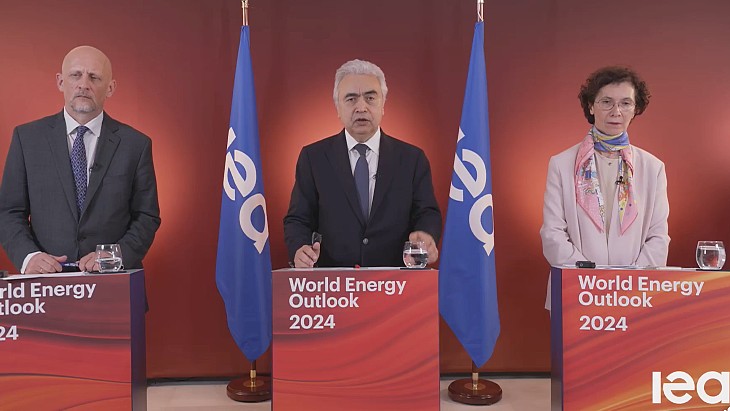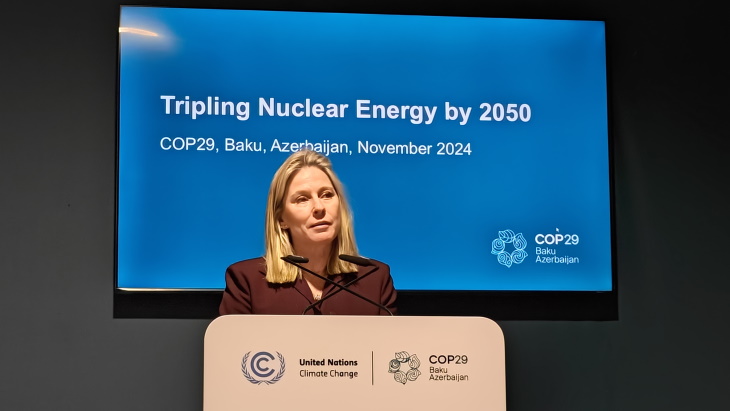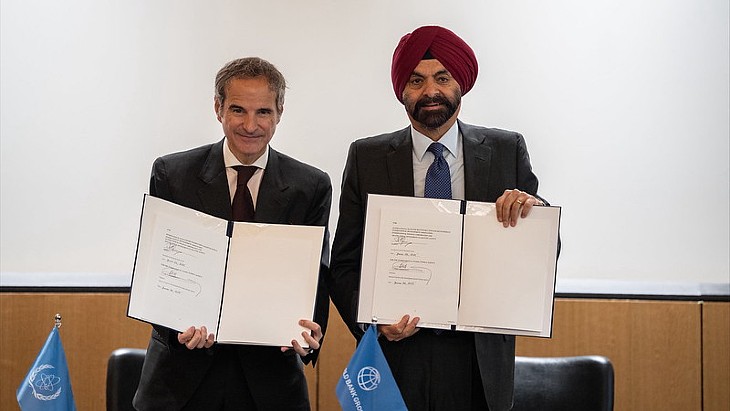The untapped potential of nuclear under the Paris Agreement
.jpg)
The paper synthesises recent global long-term energy scenarios to evaluate the potential contribution of low-carbon energy sources, especially nuclear power, in achieving climate change mitigation goals and sustainable energy development. The synthesis brings together the scenarios underpinning the IPCC Special Report on Global Warming of 1.5 degrees C, along with recent global scenario studies from the International Energy Agency, governments, industry and non-governmental organisations. It focuses on scenario projections of energy-related CO2 emissions, electricity generation, and the electricity mix (especially the role of nuclear power), updating and extending parts of the IAEA's Climate Change and Nuclear Power 2018 report.
"Leading global energy scenarios highlight the need for nuclear power to play a larger role in climate change mitigation to achieve the goals of the Paris Agreement," Turton said. "Together with other low-carbon technologies, nuclear energy can supply increasing demands for electricity and non-electric energy up to 2050 as part of a sustainable energy transition."
All scenarios envisage a strong increase in electricity generation and demand by 2050, but this is especially evident in scenarios with CO2 emissions below 20 gigatonnes in 2050, according to the new paper. This increasing electricity demand is driven by economic and population growth and a continuation of long-term electrification trends, which are accelerated in mitigation scenarios in which electricity is used to decarbonise other energy uses.
NDCs are not sufficient
"Several countries plan to utilise nuclear power for climate change mitigation in their NDCs under the Paris Agreement," Turton said. "However, it is widely acknowledged that plans in NDCs are not sufficient to meet the ultimate goal of limiting the increase in average global temperature to well below 2 degrees C, let alone to 1.5 degrees C."
Twelve countries mentioned nuclear in a positive light in their NDCs - Belarus, China, North Korea, Egypt, India, Japan, Jordan, Niger, Pakistan and the UAE - or Intended NDCs in the case of countries that have not submitted a first NDC - Iran and Turkey. South Korea also mentions nuclear power in their NDC, but in a somewhat less positive light. Three other countries mention that they do not see nuclear power as an option.
IAEA support
The IAEA is supporting countries in assessing nuclear for their NDCs (or revised NDCs) in a number of ways, one of which is in a coordinated research project (CRP) directly on this topic - Assessments of the Potential Role of Nuclear Energy in National Climate Change Mitigation Strategies.
The IAEA is also supporting many countries in their broader energy planning - for example, around 150 countries are using energy planning tools and methodologies developed by the Agency, and this also contributes directly and indirectly to countries’ strategies and planning for nuclear and NDCs, Turton said.
The CRP, which started in October 2016, included 13 participating countries - Armenia, Australia, Chile, China, Croatia, Ghana, Lithuania, Pakistan, Poland, South Africa, Turkey, Ukraine and Vietnam.
Its objective is to provide support in national evaluations of the potential role of nuclear power in mitigating greenhouse gas (GHG) emissions, as part of the preparation of country strategies under the Paris Agreement, reached in 2015 by the Parties to the United Nations Framework Convention on Climate Change.
"It's about examining how nuclear power, together with other sources of low-carbon energy, can contribute to each Member State's unique energy and development objectives for decades to come," said Turton said.
The CRP builds on earlier initiatives, including a 2006-2009 project supporting Member States with GHG mitigation strategies and energy options for reaching Kyoto Protocol targets for 2008-2012.
The CRP is currently being finalised, following a final meeting in September this year, where participating countries presented their detailed findings on the potential role of nuclear energy in national climate change mitigation over the coming decades. Both the specific results and the foundation provided by this CRP are expected to contribute to the on-going formulation and regular review of NDCs under the Paris Agreement.
Long-term planning
Tools developed by the IAEA are helping Member States to assess various options and strategies for their energy sector, including the role nuclear power can play in the future. Over the last four decades, the Agency has developed a range of analytical tools that include, for example, MESSAGE (Model for Energy Supply System Alternatives and their General Environmental Impacts), which analyses energy supply strategies.
During the IAEA's conference last week, Mark Nyasapoh, from the Nuclear Power Institute of Ghana's Atomic Energy Commission, explained how the MESSAGE model had been used for scenario modelling to "quantitatively analyse the power sector trade-offs and environmental impacts of nuclear power" in Ghana's energy mix.
The modelling further employed the assessment of all currently used energy sources in the country for electricity generation and committed generation plants and generic plants considering the 40-year long-term development plan of the country. Electricity supply scenarios modelled were based on business as usual (BaU), with an average yearly demand growth rate of 5.57% as well as on a climate change mitigation and emissions reduction strategy (ERS) relative to BaU.
Nyasapoh said the modelling results showed that the ERS either caused power plants that emit CO2 emissions to either limit production or shutdown to allow for a more environmentally friendly generation system to operate.
"The implementation of the ERS in line with the NDCs on Ghana’s energy mix has a greater influence on the energy mix in the future," he said. "From the results, nuclear power coupled with renewables has key contributions of an integrated approach to offer low-carbon energy for Ghana's industrial and economic aspirations, but requires a long-term commitment."
Jonathan Cobb, senior communication manager at World Nuclear Association, said an issue with NDCs is that they have a relatively short timeframe, running to 2025 or 2030.
"For countries planning new nuclear capacity this timeframe may be too short to include that additional nuclear generation," he told World Nuclear News.
Long Term Strategy (LTS) plans, another element of the Paris Agreement, look to 2050, and Cobb said these give a much clearer indication of the longer-term outcomes that countries are aiming to meet for the overall goal of decarbonisation.
He added that of the LTS plans submitted by governments so far, around half include deploying nuclear energy as part of their decarbonisation strategies.

_99697.jpg)







..._58412.jpg)

